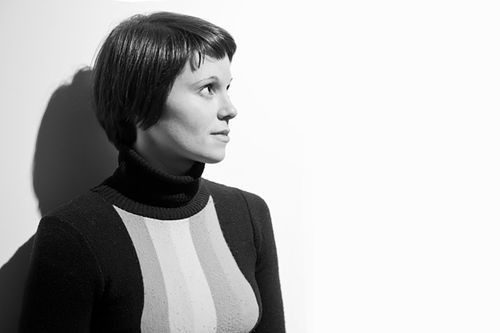Comment échapper aux formes canoniques de l’exposition ?
Date limite pour soumettre votre proposition : 30 juin 2022
Marie Fraser (Université du Québec à Montréal) et Lisa Bouraly(Université du Québec à Montréal) bouraly.lisa@courrier.uqam.ca
Type de séance : Session de communications en personne
En 2006, Paula Marincola questionne un groupe de commissaires sur What Makes A Great Exhibition ? et interroge la capacité et les limites des pratiques curatoriales à proposer des formes narratives capables de se réinventer. En 2012, Terry Smith conclut son ouvrage Thinking Contemporary Curating sur l’importance structurelle de développer des approches réflexives et critiques qui engagent activement le curating dans la recherche. Or, l’écriture de l’histoire des expositions pose le problème historiographique de l’exemplarité, de la reprise muséographique et de la canonisation des expositions (Enwezor et O’Neill 2007 ; Altshuler 2008 ; Glicenstein 2015). Pourtant, des propositions curatoriales tentent aujourd’hui d’élargir ou de sortir du canon au risque de le renforcer ou de créer d’autres modèles. Ces pratiques approchent l’exposition avec une démarche méthodologique transectorielle, transdisciplinaire (Hansen et all. 2019 ; Bismarck et all 2019), engagée ou activiste (Fraser et Jim 2018 ; Reilly 2018). Ce panel invite chercheur.e.s, professionnel.le.s des musées, commissaires et artistes à réfléchir à la question suivante : comment l’exposition des œuvres d’art, des objets ou des collections peut-elle échapper aux formes canoniques ?
How to escape exhibition’s canonical forms?
In What Makes a Great Exhibition? (2006), Paula Marincola invited a variety of curators to deliberate on the capacity and limits of curatorial practices to reinvent themselves and to create alternative narrative forms. In Thinking Contemporary Curating (2012), Terry Smith addressed the structural importance of developing reflective and critical approaches to curating in research. Existing research on exhibitions’ history has raised issues surrounding exemplarity, display, and canonization (Enwezor and O'Neill 2007; Altshuler 2008; Glicenstein 2015). In light of these concerns, curatorial projects today attempt to either broaden and/or escape the canon at the risk of reinforcing it or create other models. These practices approach the exhibition through trans-sectoral, transdisciplinary (Hansen and al. 2019; Bismarck and al. 2019), critical, and/or activist methodologies (Fraser and Jim 2018; Reilly 2018). This panel invites researchers, museum professionals, curators and artists to reflect on the following question: how can the exhibition of artworks, objects, or collections bypass canonical forms?
Bibliographie :
Altshuler, Bruce. Exhibitions That Made Art History. London : Phaidon, 2008.
Bismarck, Beatrice von, et Benjamin Meyer-Krahmer (éd.). Curatorial Things. Berlin : Sternberg Press, 2019.
Enwezor, Okwui et Paul O’Neill. « Curating Beyond The Canon ». Dans Curating Subjects, 109-22. London: Open Editions, 2007.
Fraser, Marie, et Alice Ming Wai Jim. « Introduction: What Is Critical Curating? / Introduction : Qu’est-Ce Que Le Commissariat Engagé ? » RACAR : Revue d’art Canadienne / Canadian Art Review 43, no 2 (2018): 5-10.
Glicenstein, Jérôme. « En quête d’un canon des expositions / In Search of a Canon of Exhibitions ». esse arts + opinions, no 84 (2015): 14-21.
Hansen, Malene Vest, Anne Folke Henningsen, et Anne Gregersen. Curatorial Challenges: Interdisciplinary Perspectives on Contemporary Curating. New York : Routledge, 2019.
Marincola, Paula (éd.). What Makes a Great Exhibition? Philadelphia : University of the Arts, Philadelphia Exhibitions Initiative, US, 2006.
Reilly, Maura. Curatorial Activism: Towards an Ethic of Curating. Londres : Thames & Hudson, 2018.
Smith, Terry. Thinking Contemporary Curating. 1st ed. Perspectives in Series. New York, NY: Independent Curators International ICI, 2012.
Mots clés : Curatorial, Histoire des expositions, Posture critique, Décanonisation, Collection muséale
Cette séance est organisée par la Chaire de recherche UQAM en études et pratiques curatoriales ainsi que par le Partenariat Des nouveaux usages des collections dans les musées d’art du Groupe de recherche et de réflexion CIÉCO financé par le Conseil de recherche en sciences humaines du Canada (CRSH).
Actualités connexes
Forum annuel des étudiants et des étudiantes 2023-2024

Forum annuel des étudiants et des étudiantes 2023-2024
- Université du Québec en Outaouais (UQO)
Le Partenariat Des nouveaux usages des collections dans les musées d’art organise chaque année un forum qui présente la recherche des étudiant·es inscrit·es aux cycles supérieurs et des postdoctorant·es travaillant auprès des chercheur·euses du Partenariat. Cet évènement a pour but de partager les travaux en cours et de mesurer l’avancement des recherches.
Parution : _Les musées face à leurs responsabilités environnementales et sociétales_

Parution : Les musées face à leurs responsabilités environnementales et sociétales
La synthèse du cycle de débats en ligne « Les musées face à leurs responsabilités sociales et environnementales : vers un modèle éthique et durable » est disponible en ligne.
_Retour sur le colloque « Acquérir différemment » : un survol des principaux enjeux_, par Jessica Ragazzini

Retour sur le colloque « Acquérir différemment » : un survol des principaux enjeux, par Jessica Ragazzini
Compte rendu du colloque « Acquérir différemment » qui s’est tenu en collaboration avec le Musée des beaux-arts du Canada (MBAC) et l’Université du Québec en Outaouais, dans le cadre du Partenariat Des nouveaux usages des collections dans les musées d’art.
Un nouveau projet de recherche-création pour Geneviève Chevalier

Un nouveau projet de recherche-création pour Geneviève Chevalier
Toutes nos félicitations à Geneviève Chevalier pour le financement de son projet de recherche-création Réunir à nouveau : développer des pratiques artistiques, commissariales et muséales privilégiant l'attention au vivant (FRQSC 2024-2027).
